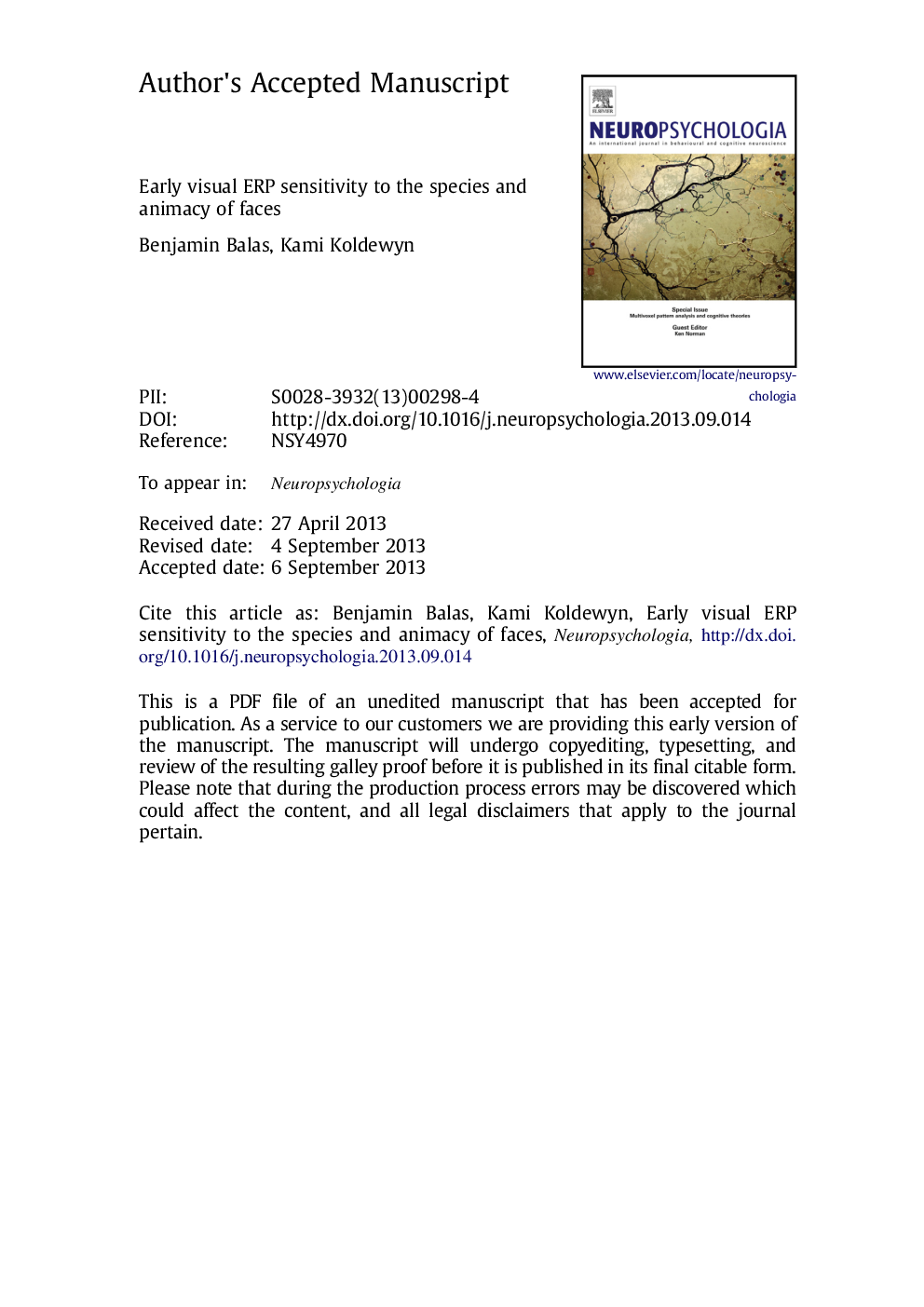| Article ID | Journal | Published Year | Pages | File Type |
|---|---|---|---|---|
| 10464747 | Neuropsychologia | 2013 | 30 Pages |
Abstract
Assessing the agency of potential actors in the visual world is a critically important aspect of social cognition. Adult observers are generally capable of distinguishing real faces from artificial faces (even allowing for recent advances in graphics technology and motion capture); even small deviations from real facial appearance can lead to profound effects on face recognition. Presently, we examined how early components of visual event-related potentials (ERPs) are affected by the “life” in human faces and animal faces. We presented participants with real and artificial faces of humans and dogs, and analyzed the response properties of the P100 and the N170 as a function of stimulus appearance and task (species categorization vs. animacy categorization). The P100 exhibited sensitivity to face species and animacy. We found that the N170's differential responses to human faces vs. dog faces depended on the task participants' performed. Also, the effect of species was only evident for real faces of humans and dogs, failing to obtain with artificial faces. These results suggest that face animacy does modulate early components of visual ERPs-the N170 is not merely a crude face detector, but reflects the tuning of the visual system to natural face appearance.
Related Topics
Life Sciences
Neuroscience
Behavioral Neuroscience
Authors
Benjamin Balas, Kami Koldewyn,
